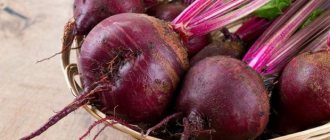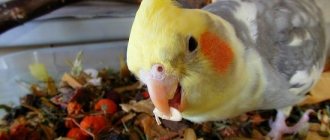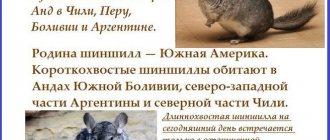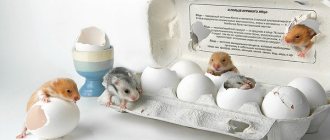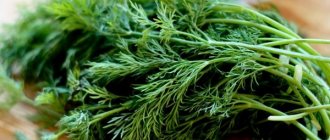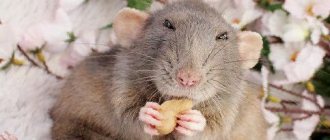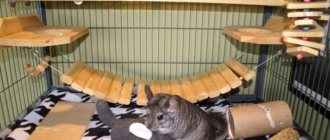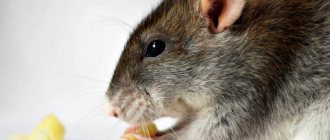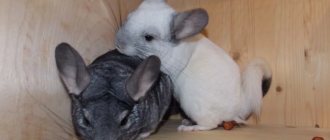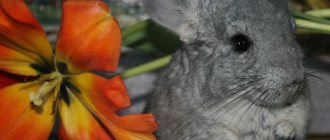Before you get a furry friend, it is better to know how to feed your chinchilla at home, because you cannot constantly change the food. Immediately after purchasing a chinchilla, it is better to feed them with food that you will buy regularly. It is also very important to feed your chinchillas high-quality dry food, free from mold and rot, otherwise she will develop digestive diseases.
This article on how to feed a chinchilla at home talks about all the foods that can and cannot be fed to the animal. Feeding a chinchilla is not difficult, the most important thing is to try to feed them at the same time.
The main diet of a chinchilla
- Ready-made food, regular or granular.
- Hay
- Pure water
Additional food:
- Something to chew on
- Treats
- Seasonal Immune Supplements
Food and hay should be in the cage at all times; the chinchilla itself knows when it needs to eat. They have no tendency to overeat, but if you notice that your animal has begun to quickly gain weight and fat has appeared on its sides, then you need to reconsider its diet.
A typical chinchilla consumes per day:
- From 10 to 40 grams of ready-made food
- 10-25 grams of hay
- 30-50 ml of clean water
Diet
The chinchilla is a small animal. You should not overfeed him, even if it seems that your individual is begging for a treat. How many times a day should you feed your chinchilla?
Advice! This should be done no more than once every 24 hours.
During feeding hours, the animal should be alert, that is, food should be given in the late afternoon. Typically, a chinchilla's bowl is filled with food between 18:00 and 20:00.
Ready food
Chinchillas eat only dry food. In their habitat, they feed on moss, twigs of various trees, dry herbs, etc. They don't eat succulent foods like fresh fruits and vegetables because their digestion isn't designed for that. From juicy food, they begin to develop gas in the stomach, which is not so easy to cure. This is because chinchillas do not have the ability to pass gas on their own.
Ready-made food for chinchillas is divided into several types:
- Regular crumbly (100-200 rub/kg)
- Granulated (400-600 rub/kg)
They are approximately similar in composition, but in regular food all the ingredients are presented in their usual form, while in granulated food they are compressed into granules.
Food is given to chinchillas every day; this is their main diet. You can choose any type of food; any of them will contain enough of the most important vitamins, microelements and fiber.
What is included in the feed:
- Cereal products
- Herbal flour
- Calcium (lime, chalk, etc.)
- Vitamin supplements
- Phosphates
Vitamin supplements to complement your diet
Additional vitamins are given to animals with a lack of nutrition, young animals, females during pregnancy and lactation, as well as in case of illness. They come in various forms, but the easiest way is to add liquid vitamin supplements to water. Some manufacturers produce food enriched with vitamins.
Owners sometimes add 2-5 g of dry yeast to the animals as a source of protein and vitamin B. Also, mineral salt stones of various types are placed or suspended in the cage: the animals grind their teeth on them and replenish the balance of minerals in the body.
Attention! If during illness the animal refuses to eat, it should be fed from a syringe. To do this, use high-calorie pastes (Nutrical, Enervite) and crushed food mixed with baby food.
Which food is better
Regular food has more disadvantages than advantages. The chinchilla selects only those ingredients that it likes and throws the rest aside. Sometimes the animal throws away almost half of the food, because not all components are equally tasty, which can lead to a lack of vitamins. In granular food, this problem is solved, since each granule tastes the same and the chinchilla will not be able to eat only what it wants. She will have to eat the entire pellet, which means she will get everything she needs for nutrition.
Pelleted food may even contain 30, 50 or even 100 different ingredients. Unlike regular food, it contains several types of vitamin supplements, various phosphates and more microelements. This food is developed specifically for chinchillas and most often by reputable food companies. If you think that even this food does not satisfy all the needs of your pet, then you can always buy yourself premium food.
Vitamins
Contrary to popular belief, there is no need for additional vitamins. If a chinchilla's diet is complete and varied, it contains a lot of succulent food, as well as high-quality granulated food, then the animal is unlikely to have a deficiency of any vitamin.
The list of things you can feed a chinchilla is quite large and creating a full menu for your pet will not be difficult. Another important point is that all vitamins are of chemical origin and still belong to medicines. Therefore, it is better not to add them to food unless necessary. The exceptions are animals that are preparing for an exhibition, pregnant and lactating females, as well as those recovering from illness.
Hay
It is the main source of nutrition for chinchillas, because it contains the fiber they need, and it also helps improve digestion. Hay should be in the cage at all times, and the chinchilla should eat as much of it as she wants. She definitely won’t overeat hay as a treat, so update the feeder more often.
Choice of hay.
Most owners of these animals buy hay from pet stores, because there are practically no useful herbs in urban areas. It is not expensive and you will have many types of hay for rodents to choose from.
Hay is not divided into types, but it can be divided into the following groups:
- Common meadow. The composition is quite simple, but very often there are herbs that are not included in the composition. This kind of hay is very cheap, usually 100 rubles per 1 kg. Production is mainly in Russia.
- From selected herbs, mountain or legumes. This hay is selected specifically for chinchillas or for animals very close to them (for example, rabbits). The composition is made taking into account many requirements for feeding chinchillas, most often the production is imported. The cost of such hay is 2-3 times higher than usual, about 300 rubles per 1 kg.
- Hay with additives. It can be either meadow or grass, but with the addition of something. Mostly carrots, apples or healthy herbs are added. Such hay costs about 500 rubles per 1 kg. I won’t recommend it because it has several disadvantages. For example, carrots can easily become infected with moths or other insects; as a result, the food will be spoiled and the chinchilla may have digestive problems.
Hay from ordinary or legume grasses is considered more useful. Thanks to it, the animal meets most of its needs for vitamins and microelements. Chinchillas eat it in larger portions than regular meadow milk.
What kind of hay should be:
- Dry
- No unnecessary debris, sticks or stones
- High quality hay smells good
- No rot or mold
- The packaging must be undamaged, otherwise various individuals, mold or rot may already live there.
Forb hay is very nutritious if it contains legumes and cereals, as well as bird buckwheat, salsify, etc. Before flowering, herbs are especially rich in vitamins and nutrients. Therefore, the hay should consist of forbs, mowed before the first flowering of the grass. Late-cut grasses have low nutritional value.
Ferns, rush grass, datura, black nightshade, spurge, horsetail, white hellebore, henbane, cornflower, crow's eye and other poisonous plants should absolutely not be included in chinchilla hay.
Grain mixtures
Grain mixtures are a very important component of the diet of domestic chinchillas, saturating the animals’ bodies with vitamins, minerals, fats and proteins. It is recommended that furry pets include the following grains and seeds in their diet:
- buckwheat
is a complex carbohydrate that saturates the animal’s body for a long time, contains iron, protein, vitamins B and P, calcium, phosphorus and iodine; - wheat
is a source of vegetable proteins and carbohydrates with a low content of fats, microelements, B vitamins, and fiber, which stimulates intestinal motility. Eating wheat is important for nursing female chinchillas who require increased care and recuperation after childbirth; - barley
- made from barley, rich in a huge amount of useful macro- and microelements (potassium, calcium, phosphorus, copper, zinc, manganese, iron, chromium, cobalt) and vitamins A, D, E and group B, necessary for the functioning of the nervous system, maintaining the beauty of chinchilla fur and leather; - corn
– contains amino acids and vitamins necessary for the rodent’s body that are involved in the pet’s metabolism; - oats or rolled oats
- a healthy nutritious cereal rich in vitamins A, B, E, amino acids and carbohydrates, helps remove toxins from the body of rodents, recommended for pregnant, lactating females and puppies; - flax seed
- contains vitamins A, B, E and Omega-3 acid, necessary for the reproductive function of pets and maintaining the immune system, the husk of the seeds is an excellent means for removing toxins from the body; - sunflower and pumpkin seeds
– rich in fats, protein and vitamins, used in minimal quantities to prevent pet obesity.
Pure water
A chinchilla needs to have clean water at all times. It is best to give living water from springs, because it contains useful microelements and bacteria. If you do not have the opportunity to take water from springs, then you will have to use what you have, namely filtered water.
You should not take bottled water; it has undergone too much purification and is “dead.”
Keep the water in the drinking bowl clean so that it does not have an unpleasant odor or blooms. The drinking bowl must be washed, preferably every 3-4 days. In general, there are no other requirements for water; the main thing is to keep the drinking bowl clean.
Feeding recommendations
When organizing food, it is not enough to know what you can feed a chinchilla and what you cannot feed. Proper feeding also means following a diet, keeping feeders and drinkers clean, as well as understanding the peculiarities of the animal’s digestion. The first and most important rule is that there should always be hay in the cage, as well as drinking water. Feeders and drinkers must be clean. To do this, they must be disinfected regularly (at least twice a week) with boiling water. It is better not to use wooden feeders - they absorb odors and become sources of mold and mildew. Preference should be given to ceramic ones, which attach well to the cage and are easy to clean.
Chlorhexidine can be a disinfectant for the entire cage - it kills germs well and is odorless, but it is better not to use it for drinkers and feeders. Some breeders use regular laundry soap as a disinfectant. You can also wipe the drinking bowls and feeders, as well as the cage, with alcohol. It is also necessary to keep the cage clean because sometimes the animal prefers to eat on the rest area or even in the house. Many owners have noticed how a chinchilla takes a piece of food and runs for cover.
It is also important to ensure that all feed is fresh, clean, and free of dust, rot, and mold. It is recommended to buy ready-made food only from trusted pet stores. All succulent food, as well as lettuce or spinach, must be washed well before being given to the animal. Branches and bark of trees that are offered to your pet must be well dried and free of traces of insect activity.
Vegetables and fruits intended for chinchillas must be washed and cut into convenient small pieces.
It is necessary to feed your pet at the same time, and all leftover food is removed from the feeder the next day. It is most preferable to feed roughage in the evening, and succulent feed in the morning. If the chinchilla is reluctant to eat, you should change the food. The first reason for poor appetite is monotonous food. New types of feed should be introduced gradually and little by little. If you are not sure whether chinchillas can eat this or that type of product, it is better to abandon it altogether and add something that the animal has already tried and eats with pleasure.
Something to chew on
The chinchilla needs to be given something to chew on. To do this, you need to give twigs or blocks of safe trees and stones with minerals that are sold for rodents. If you don't provide them with wood, they will chew on shelves and other things in the cage, because it is vital for them to grind down their teeth.
The easiest trees to find in our area that are safe for chinchillas are:
- Apple tree
- wild apple tree
- Pear
- Nut
- The rest of the list of trees that can be given to them, but they are rarely found here.
Before giving chinchillas twigs or tree dies, they must be poured with boiling water and cleaned with a stiff brush so that excess dirt and harmful bacteria are removed. Next, you need to dry them in the oven or electric dryer.
If you use tree dies, you need to fasten them together with aluminum wire, making holes in the middle. And the branches just need to be thrown into the cage.
In addition to pieces of wood, they can also buy something like crayons that contain calcium. It’s better not to look for them yourself, but to buy them at a pet store so that they can tell you which stone will suit your rodent.
How to cook it yourself
The best treat for any pet is one prepared by the owner, with care and love. A few simple recipes will help you pamper your favorite animal with homemade treats:
- Dried fruits and vegetables . The cooking method is simple. Selected ingredients (for example, apples, pears, carrots, zucchini) must be washed and cut into thin slices. Then place it on a baking sheet in one layer and put it in the oven for 15-20 minutes at a temperature of 190-200ᵒC. You can also dry the treats in a special multi-tier electric dryer. In the summer, you can dry the treats right outside, in direct sunlight. In this case, it is necessary to ensure that the fruits and vegetables are dried, but not woody.
- dry berries in the same way . For example, raspberries, hawthorn, rose hips, strawberries. Just before drying, you need to check that there are no rotten or moldy berries on the baking sheet.
- Sweet balls . To prepare, you need to mix in a deep bowl the usual food mixture that the chinchilla eats daily, seeds and pieces of fruit, berries, and dried fruits. After that, add a little honey as a binding base. The resulting adhesive mass must be formed into balls and placed in an oven preheated to 180ᵒC for 20 minutes.
- Tree branches . Chinchillas grow teeth throughout their lives. Therefore, fluffies need to constantly grind them down. For these purposes, a mineral stone is usually placed in the pet's cage. But it will be much more pleasant for the animal to sharpen its teeth on a fresh, wood-smelling twig. The preparation method is simple. Simply cut off a few side branches, clear them of leaves and wash them. Then lightly dry it in an oven or electric dryer. The pet will like twigs of apple, pear, linden, birch, and rowan.
Branches of some types of fruit trees are strictly contraindicated for chinchillas. Under no circumstances should you give your pet branches of coniferous trees, citrus trees, plums, apricots, peach, cherry, maple, bird cherry, or lilac.
It is worth keeping in mind that all dried herbs, vegetables, fruits, berries, twigs should be stored in a cool, dry place in paper bags. If storage conditions are met, the shelf life of prepared treats is 2 years. But it’s better not to wait until the deadline, but to feed the treats 2-3 months earlier.
What not to give to a chinchilla and what to feed only in limited quantities
The chinchilla itself is a fragile animal, and also has a digestion system that is not designed for many types of food.
First, I will give a list of food groups that should not be fed to a chinchilla, and then we will analyze each product separately.
- Never give food from a person's table. Especially salty, fatty and sweet.
- Give juicy food only in very limited quantities or not at all.
- Limit the number of treats
- Tree branches from our list
- Dairy products
- Give seeds and nuts in limited quantities
Never give food from a person's table.
Chinchillas have a completely different digestion system, so they need to be fed differently too. Their diet should consist of grain and grass feed rather than human table foods, which are usually meaty, fatty, spicy or sweet.
If you do not want to treat serious illnesses in your chinchilla, then never feed food that you eat yourself. For example, if you frequently pamper your pet with sweets, he may refuse the main food and develop diabetes.
Give juicy food only in very limited quantities or not at all.
Chinchillas eat dry food, so they do not know how to properly digest juicy food. Juicy foods include vegetables, fruits and some legumes, which cause gas in the stomach. This is a very serious and dangerous disease for rodents, because they themselves cannot remove gases.
Limit the number of treats
All animals love to be fed treats, but they don’t know how much they can handle; they can eat them until their stomachs burst. Many owners include daily treats in their chinchilla's diet, but this is fraught with consequences.
If you constantly feed your chinchilla treats, she will gradually begin to eat less of the main food, and then she may refuse it altogether and demand treats. Also, treats in large quantities are very harmful to health; juicy foods can cause bloating or diarrhea, and sweet foods can cause diabetes and other dangerous diseases.
Therefore, it is necessary to limit your animal’s treats in order to avoid bad consequences.
Tree branches from our list
A chinchilla's diet should include tree branches, but some of them contain dangerous or even toxic substances. Therefore, it is necessary to know which branches of trees can be given, and which ones in no case.
IT IS FORBIDDEN TO GIVE TRANCHES:
- Duba
- Sosnovykh
- Cherry
- Plum
- Ledum
- Lilac, bird cherry
- Maple
- Beech
- Citrus and exotic trees like mango
Some of them contain cyanide substances, which cause not just an upset stomach, but serious poisoning in chinchillas.
Dairy products
Cottage cheese, milk or yogurt are strictly prohibited for chinchillas, because they cause fermentation in the stomach and, as a result, bloating or other digestive diseases. In general, no one has ever recommended giving fermented milk products to rodents; it’s not clear who thought of doing this, but you should definitely forget about these products.
Useful tips
Keeping a chinchilla and feeding it properly is not difficult. But you can’t do without useful advice from experienced breeders of medium and large rodents.
The following recommendations for inexperienced chinchilla owners regarding nutrition are as follows:
- Determine in advance how much the chinchilla food you will use costs. Set aside money for the maintenance of the animal for a month in advance;
- Do not give your pet candied fruits and dried fruits purchased in a human store. They contain sugar that is dangerous for rodents. Instead, give homemade dried bananas, apples; you can feed your pet with them all year round;
- Choose fairly small granules. So, if a chinchilla accidentally swallows one without chewing, there will be no health consequences;
- Change food regularly, albeit gradually. In order for your animal's stomach to function properly, do not force it to eat the same thing all its life.
Give seeds and nuts in limited quantities
Sunflower and pumpkin seeds are found in many foods. But now there is a huge amount of controversy about whether it is possible to give seeds and nuts to chinchillas. You won’t find an exact answer here, but I will write to you all the pros and cons of both approaches so that you can decide for yourself whether you can give these products to your chinchilla.
You can only give dried pumpkin, flax or sunflower seeds. Under no circumstances should you give them fried or salted foods if you care about your pet.
Pros of seeds:
- Chinchillas love them very much, this is a kind of treat for them
- The seeds contain useful substances that make the fur thicker and more pleasant to look at.
Minuses:
- Seeds will lead to obesity of the animal if their quantity is not limited.
- Constipation and other stomach problems
There’s no need to say much about nuts; Shushiki simply adore them and it’s hard not to notice with what pleasure they eat them. BUT IT'S BETTER NOT TO GIVE THEM NUTS, because chinchillas have a very weak liver, and nuts are high in calories and difficult to digest. Many owners cannot resist giving the chinchilla her favorite nuts, but believe me, they eat other treats with the same pleasure. For example, I observed that my chinchilla eats dried apples, carrots, etc. with no less pleasure. Therefore, I see no point in pampering with a product that can cause serious harm to the health of my pet.
What do chinchillas eat besides food?
Fur-bearing animals love treats and various vitamin supplements. Although the animal receives most of its nutrients from food, in autumn and winter the animal needs feeding. The daily menu can be diluted with nuts, dried fruits, and berries.
Pet stores sell ready-made treats:
Quick view
PRESTIGE FAIRY HOUSE treat for chinchillas (1 piece)
1 PC
310 ₽
Show all offers
Made in the form of an edible solid toy. The composition includes dried apples, peanuts, seeds, dehydrated pumpkin, carrots. “Fairytale House” will delight you with its original taste and serve as a cozy refuge.
Quick view
VITAKRAFT crackers for chinchillas with herbs (2 pcs)
2 pcs
335 ₽
Show all offers
The composition of crackers includes herbal extracts, grains, seeds, and honey. Baked crackers contain no sugar, flavorings or preservatives. All components are of natural origin, support oral hygiene, and ensure teeth grinding.
Quick view
FIORY STICKS treat sticks for chinchillas with carrots (80 g)
80 gr
267 ₽
248 ₽
Show all offers
A good addition to the main diet. The sticks are made from grains, dried fruits, carrots, seeds and root vegetables.
Additional feeding requirements for chinchillas
If you provide your chinchilla with timely and high-quality food, this does not mean that it will develop 100% correctly and live a long time. It is necessary to take into account additional requirements for feeding chinchillas and constantly monitor the condition of the animal.
Helpful Tips:
- Remove leftover food from chinchillas and change bedding as often as possible. If this is not done, then mold and rot may develop in the food and bedding, which will instantly lead to digestive diseases.
- When cleaning, pay attention to the size of the bolus; if they seem runny or smaller than usual, then you need to take action. You can leave a couple of boluses and after 1-2 days compare them with fresh ones; if the sizes remain the same, then everything is in order. If the boluses have become smaller or softer, then it is necessary to look for symptoms to identify the disease. Of course, it is best to show the animal to a veterinarian, but since not everyone has the opportunity, you just need to monitor the animal’s condition and determine the disease based on obvious symptoms.
- You should not suddenly change your chinchilla's diet. If you need to change food, you need to change it gradually. Start feeding ¼ new food and ¾ old food. After a week, if there are no changes in the chinchilla’s behavior, then you can give the old and new food 50/50, and after another week, start giving only the new food.
Balance of fats, proteins and carbohydrates
When compiling a daily diet for chinchillas, it is necessary to take into account the animal’s daily need for proteins, fats, carbohydrates in percentage terms, the time of year, the age and physiological state of the animal.
Squirrels
are necessary for furry rodents to regenerate cells of all animal organ systems.
Chinchillas have a relatively low need for proteins and amino acids; during the day, you can give chinchillas about 20% of protein feeds, which are responsible for the shine and elasticity of luxurious fur, this can be alfalfa flour or hay, oilseeds, milk, legumes, cereals and nuts . A lactating or pregnant female should consume additional protein foods of animal origin for the proper development of the organ systems of the cubs and breastfeeding. These include: cottage cheese, meat and bone meal, milk granules, milk, kefir.
Fats
in the diet of pets should be contained in a minimum amount, about 4%, they are responsible for the proper development of small chinchillas, the condition of fluffy fur and skin, and are a source of energy.
To meet the fat requirements, exotic rodents are given nuts, cakes and oilseeds in their diet.
Carbohydrates
– a source of energy and the main component in the diet of domestic chinchillas. They account for about 35% of the daily feed and 30% of the crude fiber necessary to maintain intestinal motility and eliminate waste. Feeding chinchillas is based on the use of cereal hay, grains, herbs, vegetables and fruits, rich in plant fibers with a low content of protein and fat.
Treat for chinchillas
As a reward treat, you can use what chinchillas love most from food: dried fruits, nuts, berries, fruits, rolled oats, sunflower and pumpkin seeds. You can treat the animal with a tiny amount and monitor the reaction. If intestinal disorders or hair loss occur, you should stop eating tasty food.
You can purchase in specialized stores special treats for exotic rodents from the brands Rodent, Vitacraft and Life in the form of cookies, sticks, biscuits, rings, which should be used exclusively as treats for your favorite animal.
Overfeeding a rodent with delicacies leads to obesity in the pet.
Tree branches and leaves
Branch food must be present in the diet of furry pets. It is necessary for proper grinding of teeth and a source of vitamins and microelements; dried tree leaves are also readily eaten by exotic rodents. Branches of the following trees are prepared for chinchillas.
Not all tree branches can be given to a chinchilla
Birch
Birch branches contain vitamins, carbohydrates and phytoncides; dried young leaves are a source of vitamin C.
The fruits of oak branches have an astringent effect and are highly nutritious food.
It is advisable to feed chinchillas with nutritious willow branches cut in winter.
